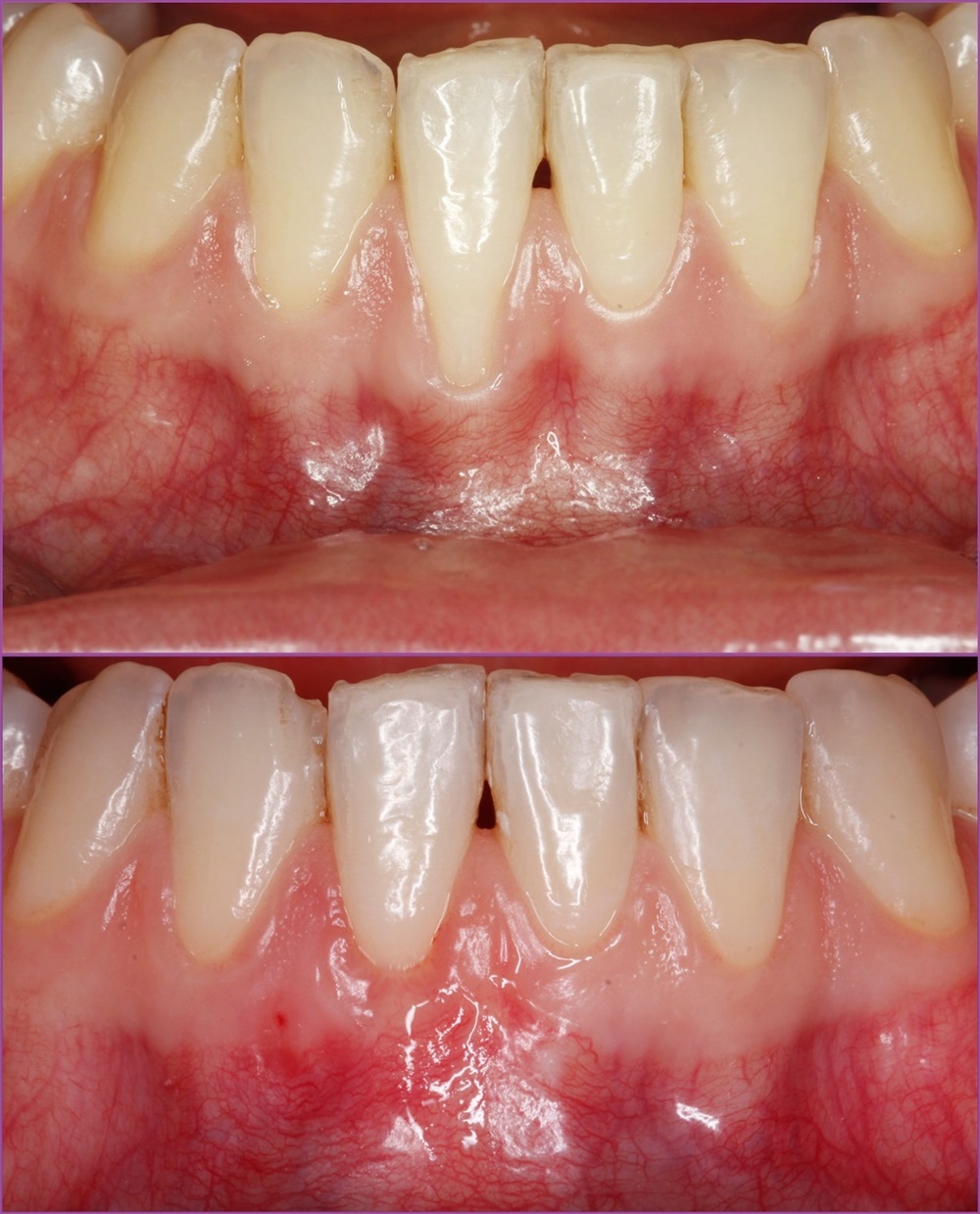Regular dental check-ups and good oral hygiene can prevent gum recession, which is a condition that affects the gum tissue around your teeth.
When gum tissue around your teeth recedes, you may experience symptoms such as bad breath, red and swollen gums, loose teeth, teeth sensitivity, and a bad taste in your mouth.
Gum recession can be caused by:
- poor oral hygiene;
- smoking;
- old age;
- diabetes;
- and other factors.
Unfortunately, once your gums start to recede and the disease progresses, the process won’t reverse on its own and surgery may be necessary.
In this article, we’re presenting a case study highlighting the steps of gum recession treatment with connective tissue transplant.
The Patient – Study Case
During a visit to our periodontist, a young female patient complained that the gum from her right mandibular lateral incisor has receded. The area is sensitive when brushing her teeth and that she experiences hot and cold sensitivity in the area.
Diagnosis of the patients
Miller’s class III gum recession in right mandibular lateral incisor based on oral examination, confirmed by radiography.
Treatment of Gum Recession

Suggested treatment – connective tissue transplant sourced from the patient’s palate.
The steps of the procedure were as follows:
- Several instances of dental hygiene treatment with instructions and instructions offered to the patient to maintain correct dental hygiene in order to treat inflammation;
- Once inflammation was cleared, a treatment plan could be devised;
- The surgical intervention was carried out under local anaesthesia and was carried out in an hour and a half;
- After anaesthesia, the receded gum was carefully detached and lifted from the tooth with a special instrument to create a so-called pocket;
- Next, connective tissue was harvested from the palate;
- A collagen sponge was placed in the place from where the tissue was harvested, which was then fixed with sutures for undisturbed recovery;
- The harvested connective tissue was placed into the previously created pocket and fixed into the required position with sutures.
Recovery after the oral surgery
The recovery following the procedure was without incidents. Sutures were removed 2 weeks after the procedure, during which time the patient underwent 3 check-ups to monitor the recovery process.
After the procedure, the patient was instructed not to wash her teeth in the area where the procedure took place, refrain from chewing with frontal teeth and use molars to chew instead, and refrain from moving her lower lip.
The patient was highly cooperative in the observance of these instructions and the procedure was a success.

Prevention is Always the Best Medicine
Gum diseases progress gradually, and your dentist may observe its first signs during your 6-monthly appointments.
Your dentist can offer advice on correct dental hygiene and lifestyle practices that can prevent your gums from receding or prevent them from getting worse.
Make an appointment at our dental clinic in Budapest to get an assessment of your oral health and a personalised treatment plant to treat dental problems that are causing you pain or discomfort.
In treating our patients, we use the latest technological developments and closely monitor the recovery of our patients to ensure the success of the treatment.
